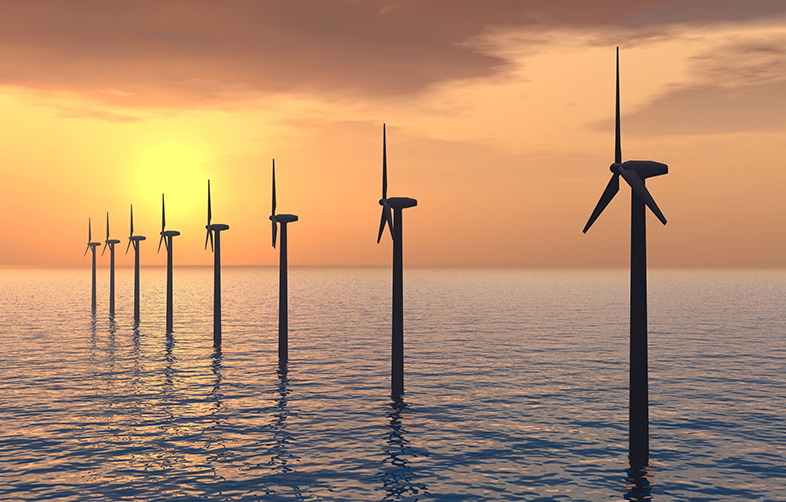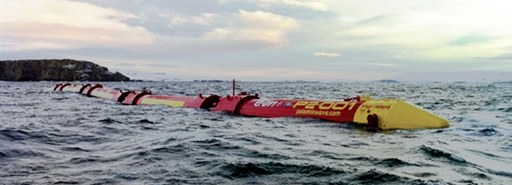3.5 Attenuator devices
The Pelamis, or ‘sea snake’, consists of a number of floating cylindrical tubes, connected to each other by active joints ( see Figure 19). The tubes are arranged at a slight angle to the down wave direction and so act as attenuator devices. The wave-induced heaving and swaying of the tubes is resisted by hydraulic rams that pump high pressure oil through hydraulic motors via smoothing accumulators, and the hydraulic motors drive electrical generators to produce electricity.
The ability to withstand high wave power densities has been a key goal of the designers. The Pelamis is capable of inherent load shedding, i.e. the spine is not subjected to the full structural loadings that would otherwise be imposed on it during a storm. It sits down the waves rather than across them and so becomes ‘detuned’ in long storm waves, where the waves are much longer than the device.
At the time or writing, Pelamis Wave Power, a privately-owned company which is designing, manufacturing and operating Pelamis devices, has raised £45 million from a variety of financial and industrial backers. Development projects are underway off the coast of the Orkney Islands, the Shetland islands, Lewis, the Sutherland Coast and northern Portugal.
The European Marine Energy Centre (EMEC) is hosting a three-year programme testing two second-generation Pelamis wave energy converters sold to two different UK utility companies. The companies have a working agreement to maximise the learning from operating and maintaining the machines in a small-scale wave farm.A further phase of development is foreseen, with a 50MW wave farm consisting of 66 Pelamis wave machines and a UK grid connection on the drawing board (Pelamis (2017).
You’ll now look at the economics of wave energy – our topic for the next section.

